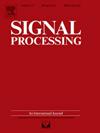逐项构造柯西高斯最大混合熵卡尔曼滤波器
IF 3.4
2区 工程技术
Q2 ENGINEERING, ELECTRICAL & ELECTRONIC
引用次数: 0
摘要
卡尔曼滤波器(KF)系统地优化准蒙特卡罗(QMC)采样点,采用针对特定集成尺寸和精度要求量身定制的逐组件(CBC)构造原理。这种优化提高了高斯加权多维积分(gmi)在KF环境下的近似精度。然而,基于CBC采样点的KF使用最小均方误差(MMSE)准则,在存在非高斯噪声的情况下可能导致显著的估计偏差。为了解决这一问题,本文首先利用所设计的新型柯西-高斯最大混合熵(CGMC),提出了一种新型逐项构造的柯西-高斯最大混合熵卡尔曼滤波器(CGMCKF-CBC)。与传统的最大混合熵准则(MMCC)不同,CGMC使用柯西核和高斯核的混合作为代价函数,并以不动点迭代的形式更新后验估计。接下来,为了进一步解决CGMCKF-CBC中存在的参数选择问题,提出了一种自适应优化策略来确定合适的参数,得到变量CGMCKF-CBC (VCGMCKF-CBC)。然后,对CGMCKF-CBC算法进行了收敛性分析和复杂度评价。最后,在非高斯噪声环境下进行了两个仿真算例,验证了CGMCKF-CBC和VCGMCKF-CBC具有良好的滤波精度和鲁棒性。本文章由计算机程序翻译,如有差异,请以英文原文为准。
Cauchy–Gaussian maximum mixture correntropy Kalman filter with component-by-component construction
The Kalman filter (KF) systematically optimizes the quasi-Monte Carlo (QMC) sampling points by employing a component-by-component (CBC) construction principle tailored to specific integration dimensions and accuracy requirements. This optimization enhances the approximation accuracy of Gaussian-weighted multidimensional integrals (GMIs) within the context of the KF. However, the KF based on CBC sampling points uses the minimum mean square error (MMSE) criterion, which can lead to significant estimation bias in the presence of non-Gaussian noises. To address this issue, this paper first proposes a novel Cauchy–Gaussian maximum mixture correntropy Kalman filter with component-by-component construction (CGMCKF-CBC) by the designed novel Cauchy–Gaussian maximum mixture correntropy (CGMC). Unlike the traditional maximum mixture correntropy criterion (MMCC), the CGMC uses the mixture of Cauchy kernel and Gaussian kernel as the cost function, and updates the posteriori estimates by the form of fixed-point iteration. Next, to further address the parameters selection issue existing in CGMCKF-CBC, an adaptive optimization strategy is proposed to determine appropriate parameters, resulting a variable CGMCKF-CBC (VCGMCKF-CBC). Then, the convergence analysis and complexity evaluation of CGMCKF-CBC are also conducted. Finally, two simulation examples are conducted in non-Gaussian noises environments to validate the excellent filtering accuracy and robustness of CGMCKF-CBC and VCGMCKF-CBC.
求助全文
通过发布文献求助,成功后即可免费获取论文全文。
去求助
来源期刊

Signal Processing
工程技术-工程:电子与电气
CiteScore
9.20
自引率
9.10%
发文量
309
审稿时长
41 days
期刊介绍:
Signal Processing incorporates all aspects of the theory and practice of signal processing. It features original research work, tutorial and review articles, and accounts of practical developments. It is intended for a rapid dissemination of knowledge and experience to engineers and scientists working in the research, development or practical application of signal processing.
Subject areas covered by the journal include: Signal Theory; Stochastic Processes; Detection and Estimation; Spectral Analysis; Filtering; Signal Processing Systems; Software Developments; Image Processing; Pattern Recognition; Optical Signal Processing; Digital Signal Processing; Multi-dimensional Signal Processing; Communication Signal Processing; Biomedical Signal Processing; Geophysical and Astrophysical Signal Processing; Earth Resources Signal Processing; Acoustic and Vibration Signal Processing; Data Processing; Remote Sensing; Signal Processing Technology; Radar Signal Processing; Sonar Signal Processing; Industrial Applications; New Applications.
 求助内容:
求助内容: 应助结果提醒方式:
应助结果提醒方式:


